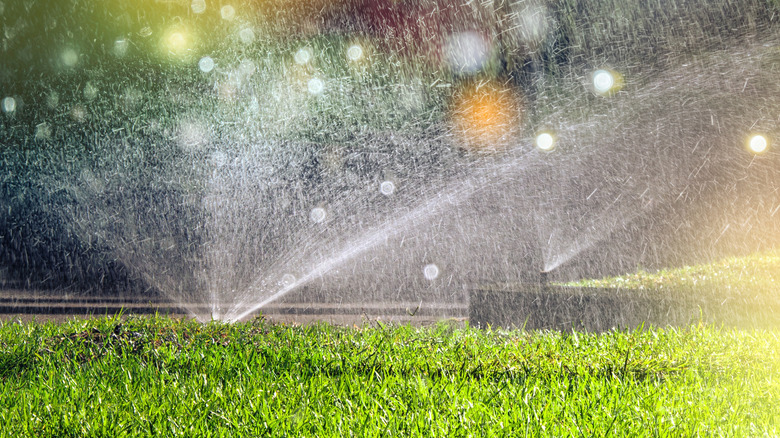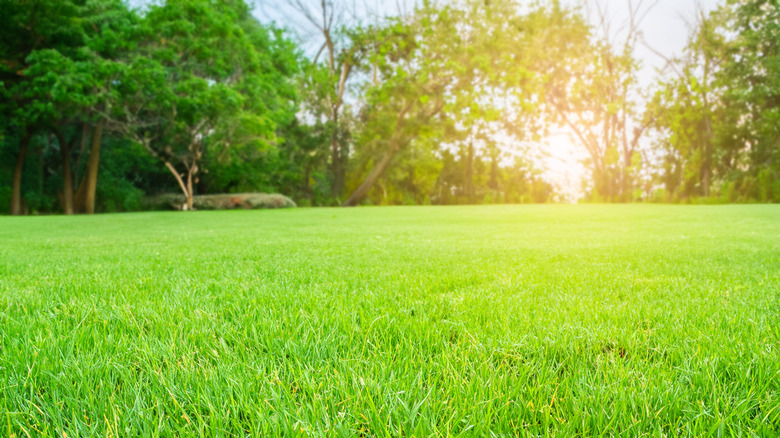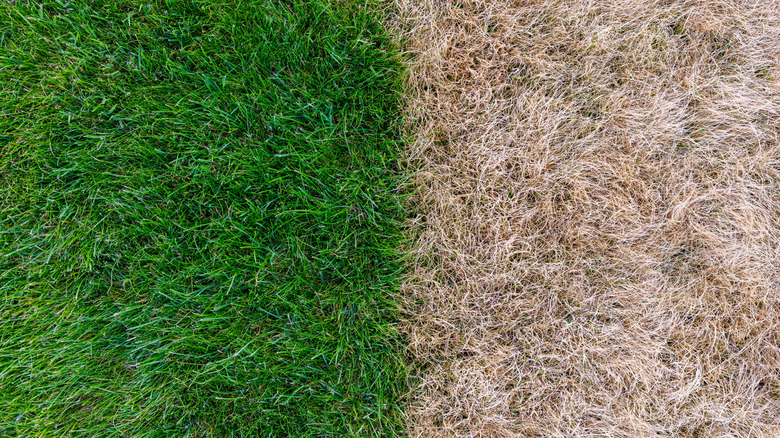The Best Time (And How Often) To Water Your Lawn For Luscious Grass
Achieving a beautiful lawn isn't just about how much water you use, it's about when and how you use it. Proper watering encourages root growth, helps reduce disease risk, and conserves water while keeping your grass strong. The best way is to water deeply, but infrequently, allowing the water to penetrate 6 to 8 inches into the soil. Timing matters just as much as technique, watering at the wrong time of day not only wastes gallons of water but also leaves your grass vulnerable to fungal infections overnight. Morning time has always been the best time to water your lawn, specifically between 4 a.m. and 9 a.m.
Of course, different kinds of grass have different needs. Cool-season varieties, like Kentucky bluegrass, need more water than warm-season grass like Bermuda. Soil type can also impact how you water your lawn. Clay will hold moisture longer but absorb the water more slowly, and sandy soils drain quickly but need watering more often. The most important part is to pay attention to your lawn, if your grass appears dull, folded, or leaves footprints when walked on it's probably being underwatered, while constant soggy areas are a dead giveaway of overwatering.
Why dawn is your lawn's best friend
There are lots of mistakes you can make when watering your lawn, but the morning time works so well because it takes advantage of cooler temperatures. The cooler air and higher humidity almost guarantee that water will reach the roots of your grass compared to watering in the middle of the day. Early watering also allows the grass to dry during the day, reducing the possibility of fungal infections. Watering in the middle of the day wastes resources due to evaporation during peak sunlight hours. Evening watering might seem convenient since there's less direct sunlight, but it creates a dangerous wet environment that sits on your grass all night long.
Automatic sprinklers can help solve timing issues, but be sure to adjust them as the seasons change to stay in that sweet spot. If you prefer to water the grass yourself, the best bet is to keep an eye on the sunset. If you see a little sunlight while watering, you're probably within the perfect time span. Also, pay attention to your landscape, trees create shaded areas of your grass that won't need as much water as the unshaded spots.
How often you should actually be watering your lawn
Watering your lawn every day is not the way to go, and your specific area is an important factor when considering how often it should be done. Generally, 1 to 1.5 inches of water per week is recommended, but adjustments are required based on many factors. In hot climates, like the Southwest, grasses do best with deep watering three to four days a week. The intense sun and sandy soils mean more frequent sessions often work best. The cooler Northern regions may only need watering once or twice a week, especially when the morning dew helps provide so much natural moisture.
Keeping track of the seasons is important as well. More frequent waterings may be required in the summer, while winter months can be reduced. If you keep finding brown patches throughout the lawn there is an easy way to check if that area is getting enough water. During the day, take a 6-inch screwdriver and push it directly into the grass, down to the handle. When pulling it back up if the screwdriver is completely dry, the soil below isn't getting enough water. If you can't push it all the way down, not only is moisture a problem, but you may have compaction issues with your soil as well. Knowing your lawn and adjusting your watering accordingly is a great way to keep it lush and fresh throughout the year.


